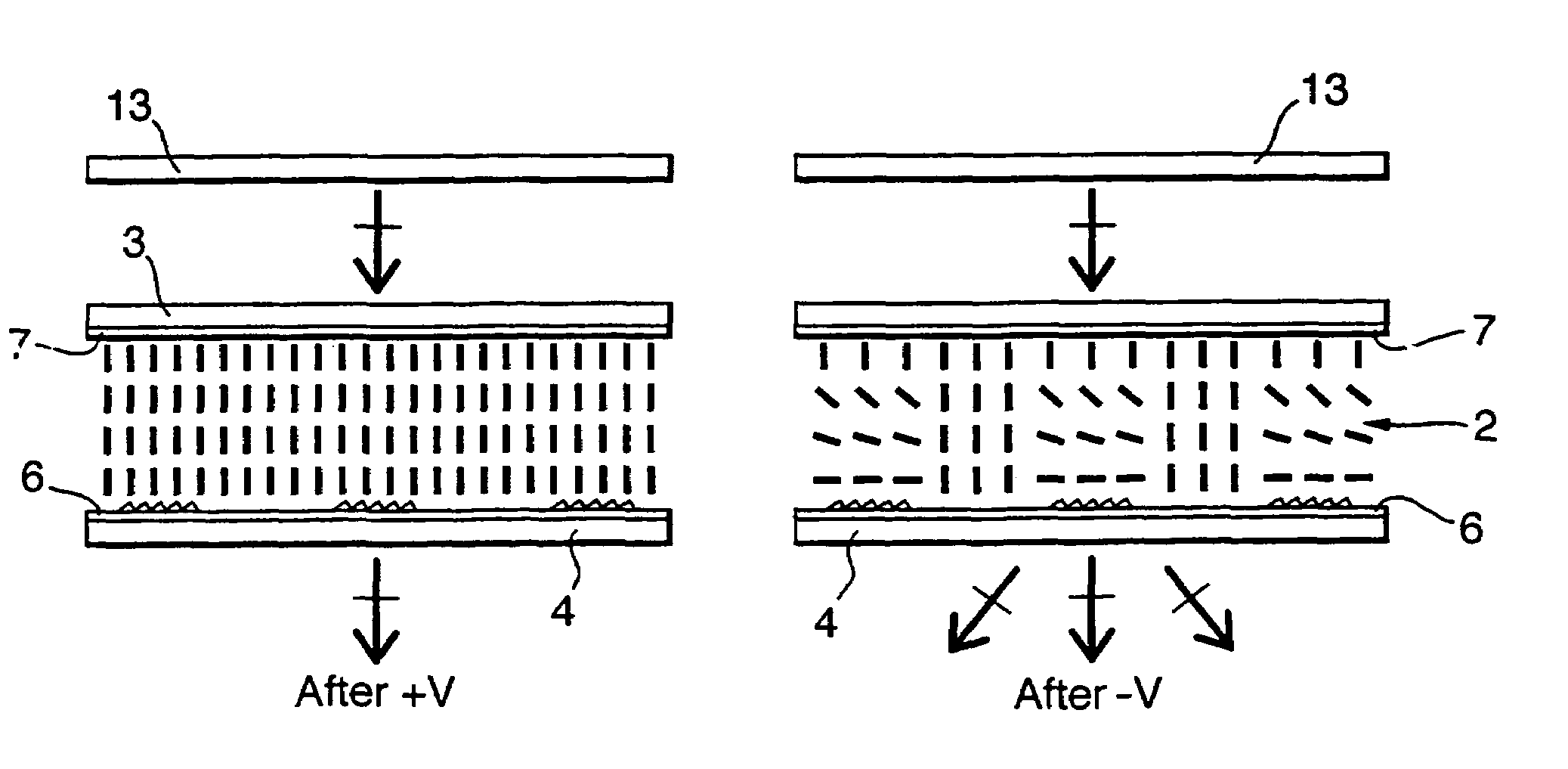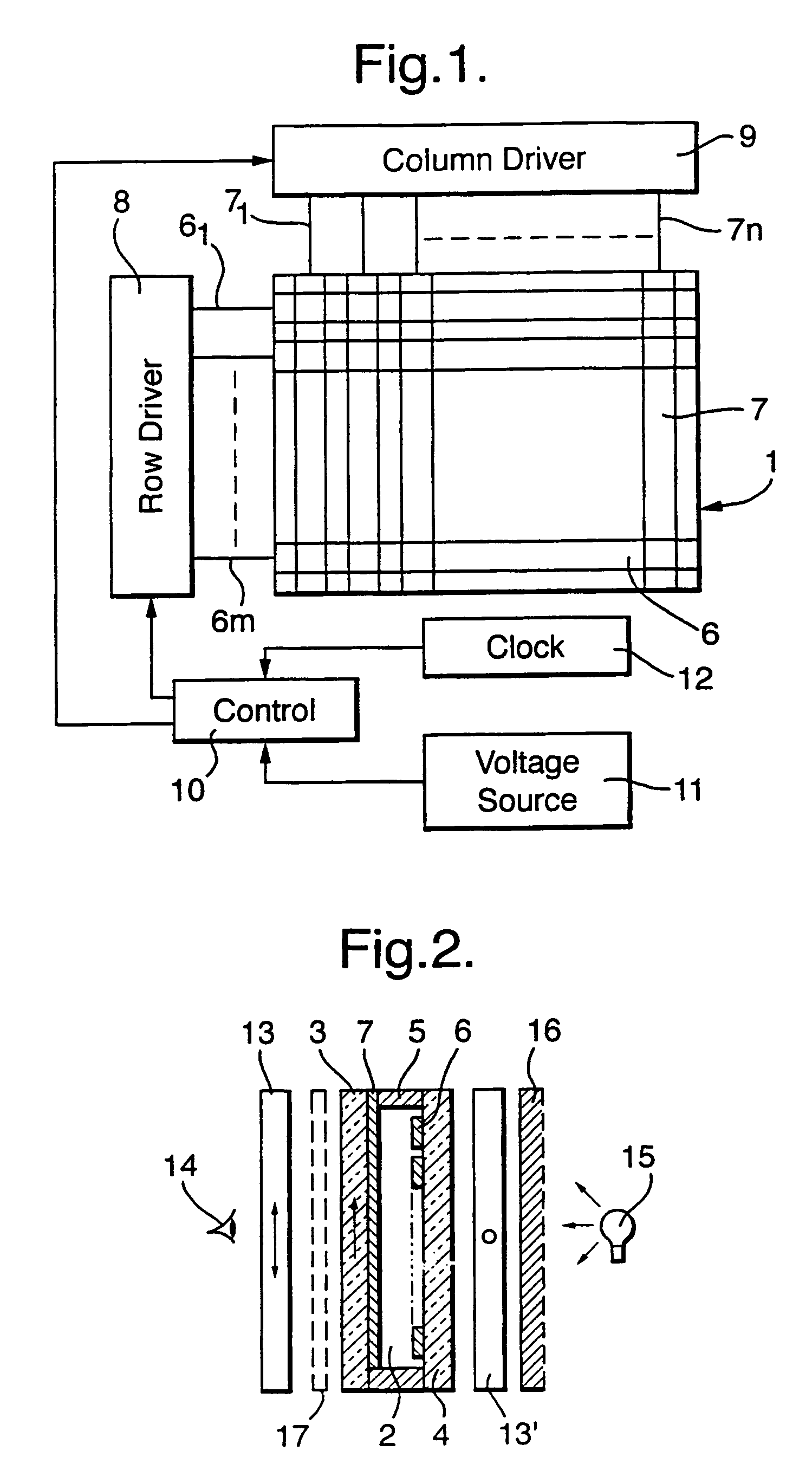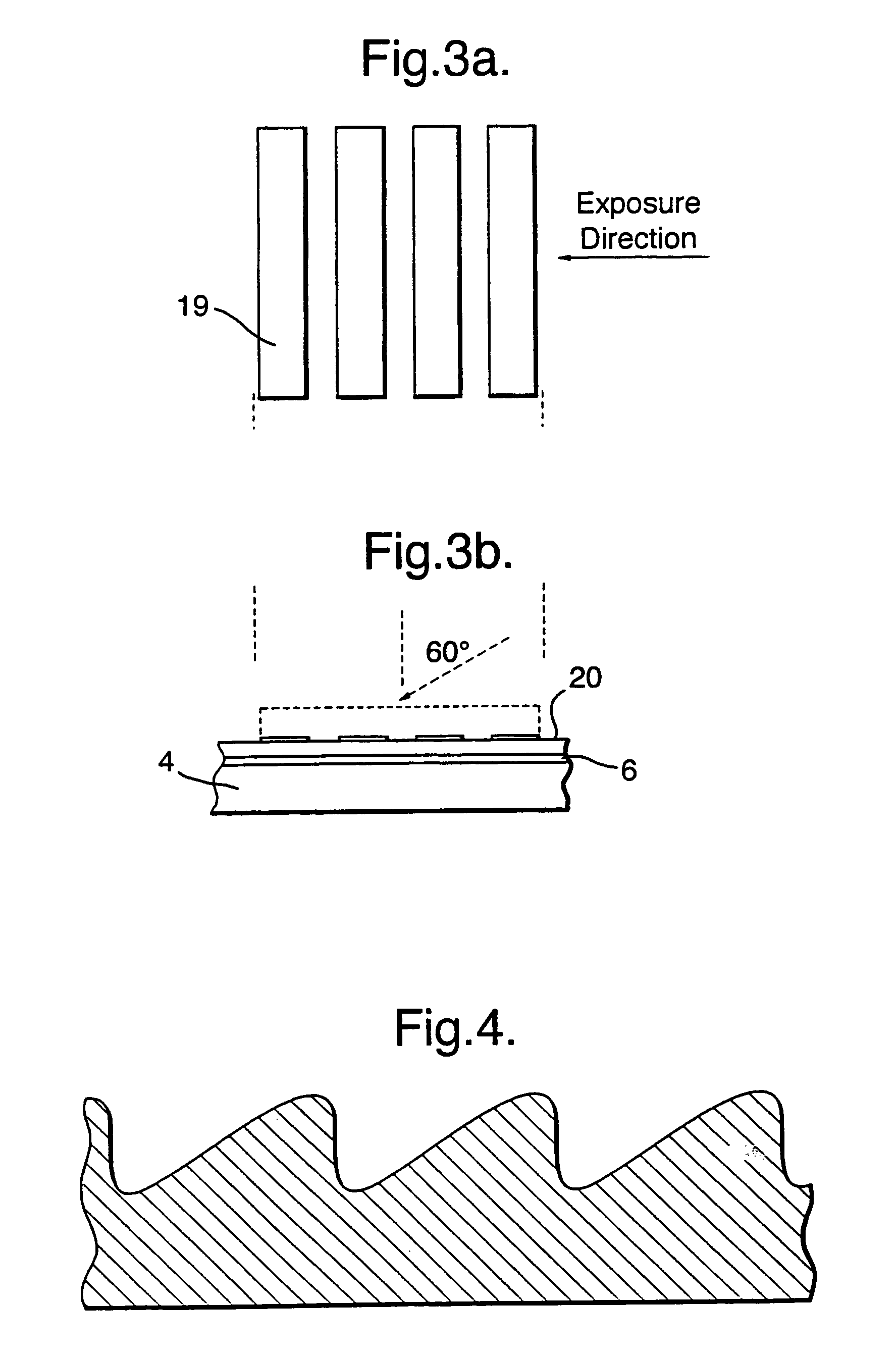Bistable nematic liquid crystal device
a liquid crystal device and nematic technology, applied in non-linear optics, instruments, optics, etc., can solve the problems of poor switching performance, lack of contrast, reflectivity, inefficiency of power usage, etc., to improve device performance, reduce scattering, and improve the effect of “dark” sta
- Summary
- Abstract
- Description
- Claims
- Application Information
AI Technical Summary
Benefits of technology
Problems solved by technology
Method used
Image
Examples
example 2
[0139]A similar cell to that of example 2 was also produced but this time using zinc-sulphide substrates rather than the conventional glass. This cell was then tested for use in the IR by imaging a warm object using an IR camera sensitive to the wavelength range 3 to 5 μm. The contrast between scattering and non-scattering states was found to be significantly higher than that observed at optical wavelengths, so that an image, which was clearly discernible in the non-scattering state, was obscured by the cell after latching into the scattering state.
example 3
[0140]A third cell was prepared following the same procedure as in the previous example, but the cell was filled with the liquid crystal E7 into which 2% by weight of a black dichroic dye had been mixed (see for example Bahadur Liquid Crystals: Applications and Uses, Volume 3, Chapter 11, World Scientific Press). In this case, a contrast ratio of about 2:1 was observed between the two latched states for light of normal incidence, due to the difference in optical absorption between the two states. This was improved still further by operating the cell in reflective mode, in which the flat surface of one side of the cell was coated by a reflective aluminium layer.
example 4
[0141]In the previous example, the scattering was very weak, and unattractive for a display device. The reason for this was that the size of the variation of alignment direction within the substrate plane was on length scales significantly higher than the wavelength of incident light. To ensure a higher degree of scattering for optical wavelengths a substrate was prepared using a mask with a design similar to that of FIG. 6b), wherein the grating pitch was 0.15 μm and the features of constant groove direction had an average width of about 0.6 μm. The smaller feature sizes were achieved using a frequency doubled argon ion laser (at 257 nm, for example see Hutley ibid p 99) used to develop the deep UV photo resist PMGI. In this example, the substrate was irradiated at normal incidence. After development, the surface was coated with a fluorinated chrome complex homeotropic surfactant and spaced at 20 μm from a second, flat homeotropic surface. The cell was again filled with BLO36, as i...
PUM
 Login to View More
Login to View More Abstract
Description
Claims
Application Information
 Login to View More
Login to View More - R&D
- Intellectual Property
- Life Sciences
- Materials
- Tech Scout
- Unparalleled Data Quality
- Higher Quality Content
- 60% Fewer Hallucinations
Browse by: Latest US Patents, China's latest patents, Technical Efficacy Thesaurus, Application Domain, Technology Topic, Popular Technical Reports.
© 2025 PatSnap. All rights reserved.Legal|Privacy policy|Modern Slavery Act Transparency Statement|Sitemap|About US| Contact US: help@patsnap.com



